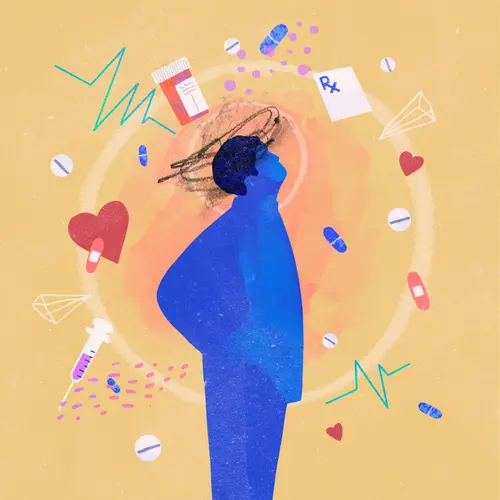Your heart is pounding. You can’t catch your breath. You feel consumed by fear and may even think you’re dying -- even though you’re really in no danger. This is what it feels like to have a panic attack.
These episodes of extreme fear often happen without warning. You may have one or more panic attacks during your life, or you may never have one. So what happens inside your body and brain during a panic attack?
What You Feel
A panic attack means you have four or more of these symptoms:
- Feel like you’re losing control or going crazy
- Pounding heart
- Sweating
- Trembling or shaking
- Shortness of breath
- Chest pain
- Nausea
- Dizziness
- Chills or hot flashes
- An out-of-body sensation
- Like you’re choking
- A fear that you’re dying
- Tingling or numb hands, arms, feet, or legs
Many people mistake a panic attack for a medical emergency, like a heart attack. The symptoms can seem similar, but panic attacks aren’t life-threatening.
They usually pass in several minutes, but they can sometimes linger for hours. Afterward, you might feel drained and exhausted.
What Happens Inside Your Body
Your body’s “fight or flight” response is behind these intense physical symptoms. Normally when you encounter a threat -- whether it’s a grizzly bear or a swerving car -- your nervous system springs into action. The hormone adrenaline floods into your bloodstream, putting your body on high alert. Your heartbeat quickens, which sends more blood to your muscles. Your breathing becomes fast and shallow, so you can take in more oxygen. Your blood sugar spikes. Your senses get sharper.
All of these changes -- which happen in an instant -- give you the energy you need to confront a dangerous situation or get out of harm’s way quickly.
With random panic attacks, your body goes on alert for no reason. Researchers don’t know exactly what triggers them. But the physical effects are real: During a panic attack, the adrenaline levels in the body can spike by 2 1/2 times or more.
Panic attacks may not come as unexpectedly as they seem. The physical changes may start about an hour before an attack. In one study, people with panic disorder wore devices that tracked their heart activity, sweating, and breathing. The results showed lower-than-normal levels of carbon dioxide, a sign of rapid, deep breathing that can leave you breathless, as early as about 45 minutes before the panic attack.
What Happens in Your Brain
Scientists are still studying how panic attacks affect the brain. It’s possible that the parts of the brain that are tied to fear become more active during an episode. One recent study found that people with panic disorder had lots of activity in a part of their brains tied to the “fight or flight” response.
Other studies have found possible links between panic disorder and the chemicals in your brain. The condition may also be linked to an imbalance in serotonin levels, which can affect your moods.
What You Can Do
To get through a panic attack, try to take control of your breathing first. Find a place where you can sit or be comfortable. Concentrate on making your breath slow and even. Try to inhale through your nose for 4 seconds, hold it for 2 seconds, then exhale through your mouth for 6 seconds. Tell yourself that you’re not in danger and that the attack will pass.
If you’re not sure if you’re having a panic attack, it’s a good idea to go to the hospital to rule out any other health problems.
Panic disorder is one of the most treatable types of anxiety disorders. Medication and a type of talk therapy called cognitive behavioral therapy can help. See your doctor if you have panic attacks often.

